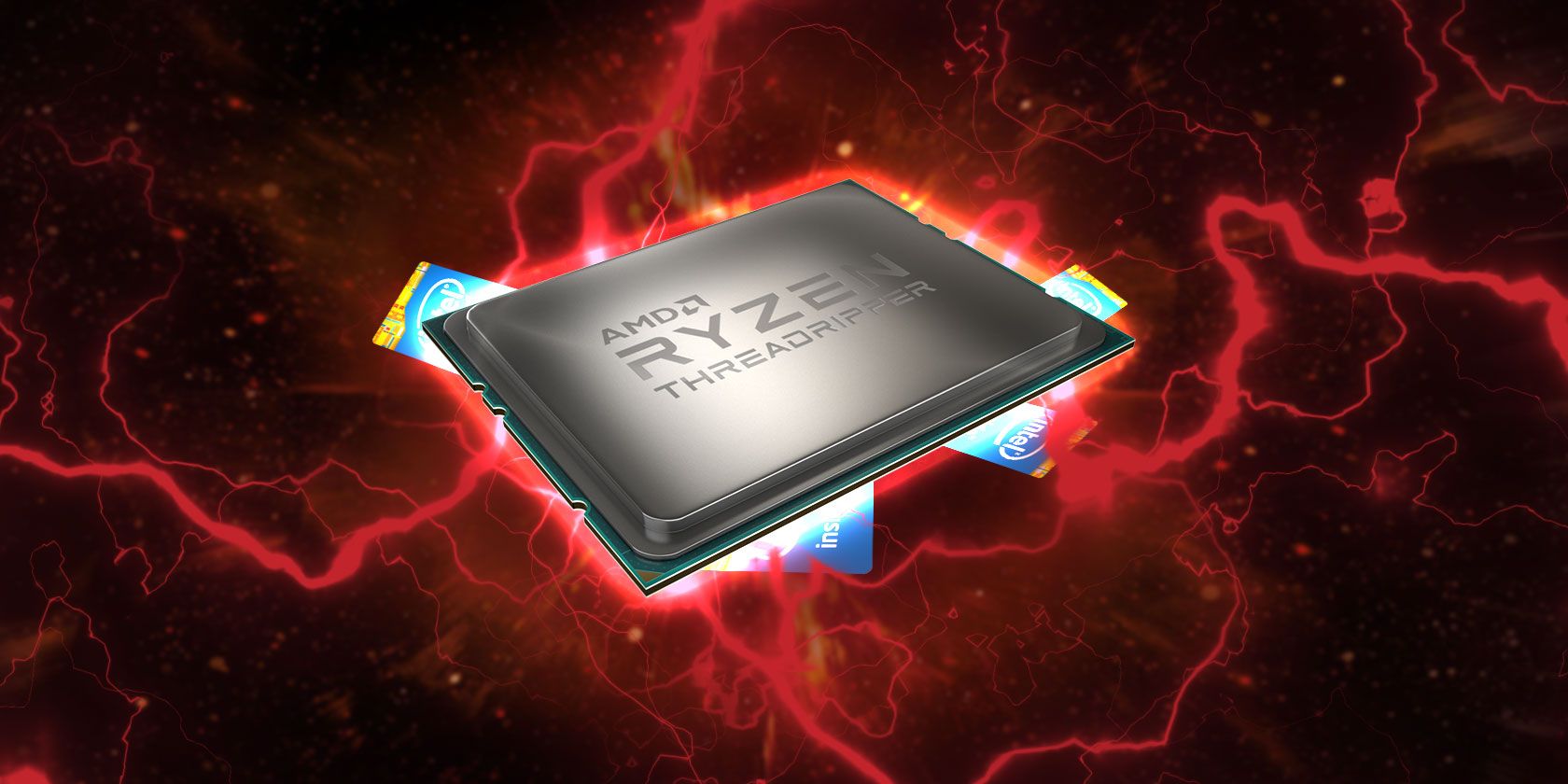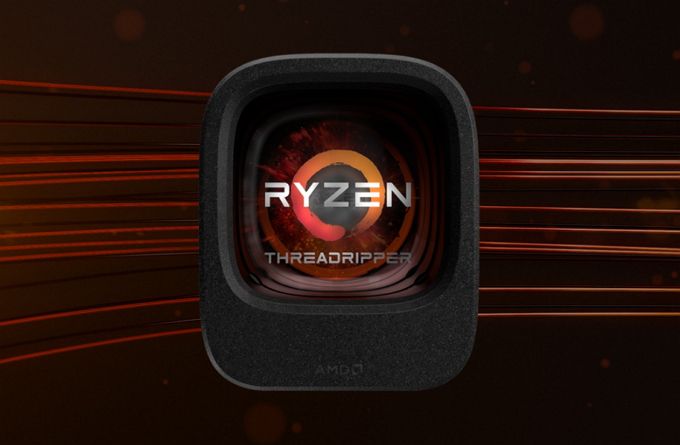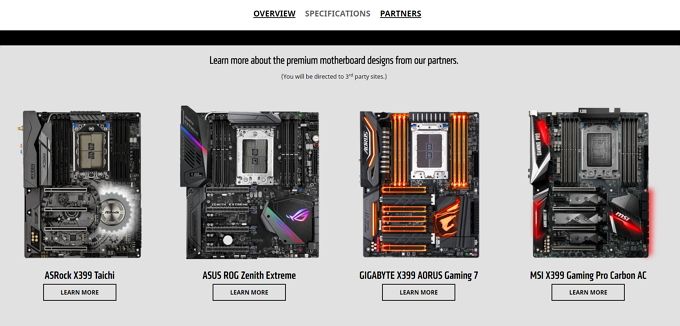First came the battle for ever higher frequencies. Once the limit was reached, manufacturers pivoted, and so started the "War of the Cores" that raged throughout the 2000s.
In the battle for your processor, manufacturers and developers found ways to overcome physical limitations and began creating multi-core processors. The improvements to processing power and speed helped usher in a new era of computing. But there was always going to be a limit to how useful piling processors on top of one another would be -- or so it seemed.
Enter AMD's Threadripper.
Threadripper: Origins
AMD and Intel had continued to one-up each other throughout the late 90s, releasing CPUs with ever higher frequencies. With the turn of the new millennium, and the start of the Core Wars, Intel pulled away from AMD to become the world's most popular CPU manufacturer.
Intel became the symbol of performance. The "Intel Inside" ads and stickers on your computer were shorthand for quality. AMD continued to churn out CPUs of lower cost -- and arguably lower quality -- becoming synonymous with the phrase "you get what you pay for."
Following corporate restructuring in 2014, AMD seemingly refocused, and in early 2017 they launched the well received Ryzen CPUs. Given their past history, many were unsure if this was a turnaround or one off success for the CPU manufacturer. In a surprising turn of events, AMD announced and launched the Ryzen Threadripper range of CPUs within months of the original Ryzen launch.
And with the release of Threadripper, it looks as though AMD may be ready to offer serious competition to Intel for the first time in many years.
Threadripper, Three Ways
AMD initially announced the Ryzen Threadripper range in July 2017. At that time there were to be two variants: Threadripper 1920X and 1950X.
The 1920X is priced at around $800 and features 12 cores and 24 threads, while the 1950 has 16 cores and 32 threads for $1,000. These launched in early August 2017, while a third Threadripper -- the 1900X -- was launched at the end of the month. The 1900X is the most affordable of the bunch at $550 for a total of 8 cores and 16 threads.
All TRs have a stunning 64 PCI-E lanes and support quad-channel DDR4 RAM. This means that, at least in theory, the TR CPUs can handle up to an enormous 1TB of RAM.
Fortunately for the overclockers out there, all three variants are unlocked, allowing you to tinker to your heart's desire. The Thermal Design Power (TDP) of a TR CPU is a massive 180W -- double that of AMD's remaining Ryzen CPUs.
What Makes Threadripper Different?
The consumer and enterprise markets have very different requirements. Both AMD and Intel recognize this and keep both divisions entirely separate, functioning like standalone businesses.
In recent years, Moore's Law has seen the two markets draw ever closer, as technology has decreased in price but increased in performance. Threadripper is the culmination of these outside influences, bringing an enterprise workstation grade CPU into the realm of consumer computing.
While the underlying TR technology is undoubtedly impressive, the biggest success is the price. Intel builds its CPU chips in many different configurations depending on the market each is serving. AMD has made use of economies of scale, using the same manufacturing process for most of their range.
Instead of requiring a unique manufacturing setup for TR, it can be run alongside the other Ryzen lines. This has meant that AMD can offer a high performance CPU, but for a cost that undercuts many of Intel's equivalent offerings.
Simultaneous Multithreading (SMT) is a technique that allows each processor to multitask and perform multiple sets of instructions at the same time. Intel has included SMT in their CPUs for some time, using their proprietary method of Hyper-Threading.
The Ryzen range represents AMD's first foray into 2-way SMT, allowing each core to run two threads. Ryzen also introduced AMD's Zen microprocessor architecture. Zen-based processors show a 52 percent performance improvement over AMD's previous architecture. They also have reduced energy consumption, improved power management, dynamic frequency management, and achieve an improved heat/power ratio.
The Threadripper Platform
Another major difference from AMD's past CPUs is the creation of Threadripper as a platform. If you want to upgrade to TR, you can't simply buy the chip and insert it into your current setup.
Instead TR is designed to work on the new X399 platform, which requires a compatible motherboard. This decision may look like an attempt at profiteering, and a way to keep you from jumping ship to Intel, but it does have a practical reason too.
Threadripper is the first of AMD's CPUs to move away from a Pin Grid Array (PGA) to a Land Grid Array (LGA) for connection to the motherboard. In practical terms, this means the CPU's pins are now located on the motherboard, not the chip itself. This should make it much harder to damage the chip while working on your machine.
Threadripper: What Is It Good For?
At launch, the Dell Alienware brand has an exclusive license for prebuilt Threadripper machines, starting with the Area-51 Threadripper Edition. The deal with Alienware reinforces AMD's marketing that gears TR towards gamers, but it is partial truth to suggest that TR is a worthy upgrade.
As we noted earlier, TR is an enterprise level CPU aimed at consumers. It can multitask with ease, and render at lightning fast speeds -- but that doesn't mean that your games will run any faster.
Gamers who stream will benefit from the TR upgrade, as it will allow them to handle the game and streaming all from one machine. Legacy Compatibility Mode (LCM) switches the TR CPUs into a lower core configuration -- a gift to those playing older games that refuse to launch when too many logical cores are detected.
Workstations are designed to handle multiple tasks all at the same time, and ultimately that is where Threadripper finds its calling. It is designed for system builders, enthusiasts, and content creators. Multithreaded applications for video encoding, software compilation, and rendering will be only too happy to indulge in TRs high performance cores.
There is already evidence that TRs high performance is shaving huge swathes from time-consuming tasks. Linux website Phoronix found that it would compile an entire kernel build in just 36 seconds.
The benchmarking website OpenBenchMarking.org reported a build time of 44.78 seconds against the $1,000 Intel Core i9 7900X's 48.37 seconds. A 7 percent reduction in build time is significant when you consider that both the 1950X and 7900X retail for the same price.
Get Ripped
When one company has a monopoly over the market, they have no incentive to innovate. This accusation has been applied to Intel in recent years, but was largely due to AMD's lackluster offerings. By adding the Threadripper CPUs to their roster, alongside the impressive Ryzen range, 2017 has been a strong year for AMD.
There has even been speculation that AMD's newfound focus could see the AMD vs. Intel CPU wars heat up again, which in turn will bring innovative new products at competitive prices. This would be a long-awaited benefit for all of us.
What do you make of Threadripper? Eager to give it a go? Or do you think it's not worth the hype? Let us know in the comments below!



